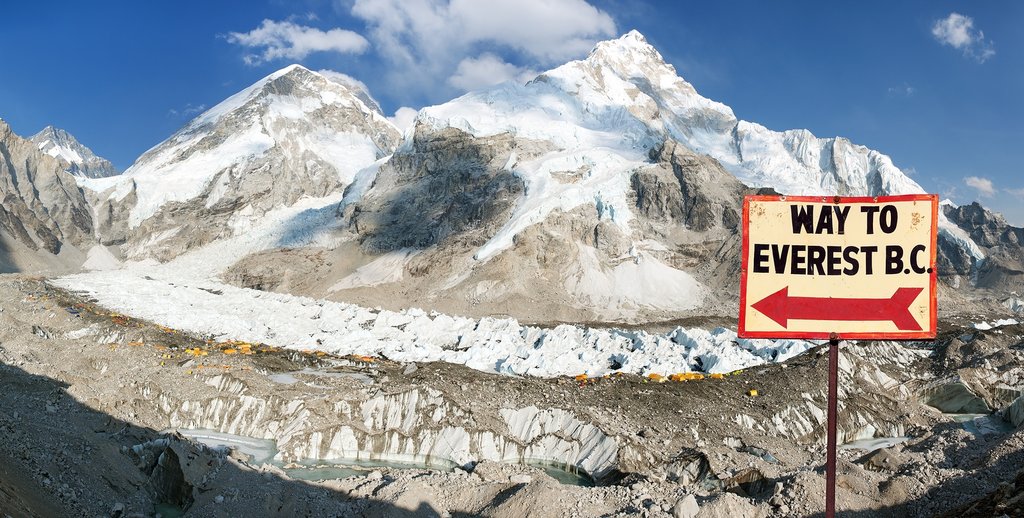
High rainfall across Nepal keeps most trekkers off the trails in July. But, those who prepare well with good rain gear, and who are prepared for some potential travel delays, can still have a good time trekking to Everest Base Camp. Here’s what to expect in this month.
Nepal’s Weather in July: Trekking to Everest Base Camp
July in Nepal plunges you right into the heart of the monsoon season, a time characterized by daily rainfall and generally warm temperatures. The Everest Region, in particular, experiences its highest rainfall of the year during July and August. While the prospect of trekking to Everest Base Camp (EBC) during this period might seem daunting, it’s definitely achievable with the right preparation and a realistic understanding of the conditions. Be prepared for persistent moisture and the potential for cloud cover to obscure those awe-inspiring mountain vistas.
Temperatures around Namche Bazaar in July are generally quite comfortable, with average highs reaching around 60°F (16°C). As you ascend into the higher altitudes, you’ll notice a welcome drop in temperature and potentially, a decrease in rainfall. However, lower elevations are almost certain to experience rain. It’s also crucial to be aware of the increased risk of landslides that could potentially block trekking trails, and to be prepared for navigating muddy paths. But remember, even during the monsoon season, it doesn’t usually rain continuously throughout the entire day. There will still be opportunities to appreciate the majestic scenery.
Crowds and Costs During Nepal’s Monsoon
Early July might still see a few expeditions concluding their Everest climbs (or attempts!), as the typical climbing season wraps up between May and June, with the monsoon season rendering conditions far too challenging and dangerous for ascent. However, you’re highly unlikely to encounter many other trekkers on the EBC trail during July. This is undeniably the low season for trekking. Finding accommodation in the teahouses won’t be a problem, although you should be aware that some establishments might be closed for the off-season. This can lead to a more solitary, tranquil experience on the trails, perfect for those seeking solitude amidst the grandeur of the Himalayas.
Recommended Routes for July Treks
If your heart is set on trekking all the way to EBC in July, you’ll probably encounter the heaviest rainfall at the lower elevations. Although, it’s important to note that nowhere within the Everest region can truly be considered ‘low’ in altitude. As you climb higher, the rainfall tends to lessen. However, persistent rain clouds will likely limit visibility in most areas, even when it’s not actively raining. If you’re willing to embrace a few days of trekking in potentially wet conditions, you still have a decent chance of experiencing EBC itself under reasonable weather.
An excellent alternative, especially in July, is to explore the Everest region without committing to the full EBC trek. Establish a base in Namche Bazaar and explore the surrounding area with day hikes. On days when the weather is truly uncooperative, you can take advantage of the cafes, shops, and even museums that this charming Sherpa town has to offer. Namche Bazaar is conveniently located just two days’ walk from Lukla, making it easily accessible.
What to Pack for a July Trek
Packing appropriately is crucial for a successful and enjoyable trek in July. Ensure you have high-quality waterproof gear to withstand the monsoon rains. Pack enough clothing so that you don’t have to reuse damp clothes from the previous day. Some trekkers find an umbrella useful for lighter showers, while others prefer the comprehensive protection of a comfortable raincoat and rain pants for more persistent rain.
The debate about bringing entertainment for Himalayan treks is ongoing. Ideally, the breathtaking views and exhilarating trails would be enough to keep you fully engaged. However, in July, the chances of delays or being rained in are significantly higher. Therefore, bringing books, e-readers, or playing cards is a wise decision to combat potential boredom during unexpected downtime.
Reaching the Everest Region: Getting There and Away
The quickest and easiest method to reach the Everest region in July (as in other months) remains flying from Kathmandu to Lukla. However, it’s important to be aware that flights are frequently subject to delays or cancellations due to weather conditions in Kathmandu, Lukla, or along the flight path. These disruptions are even more likely to occur in July. If you’re flying to or from Lukla, it’s crucial to allow ample buffer time before any connecting international flights, and don’t forget to pack entertainment to help you endure any potential delays.
While opting for overland travel might seem like a solution to avoid flight disruptions, it’s generally not advisable in July. Overland routes to Lukla, such as the ‘Pioneers’ Route’ originating from Jiri, are highly susceptible to landslides blocking the roads, making travel difficult and potentially dangerous.
Our Recommended July Itineraries in Nepal
Consider these options for treks that are especially well-suited for the conditions: Everest Base Camp Trek, various shorter treks in the Everest Region for those with less time, and the Namche Bazaar Trek. These itineraries provide a range of options to experience the beauty of the region, even during the monsoon season.
B-1709
